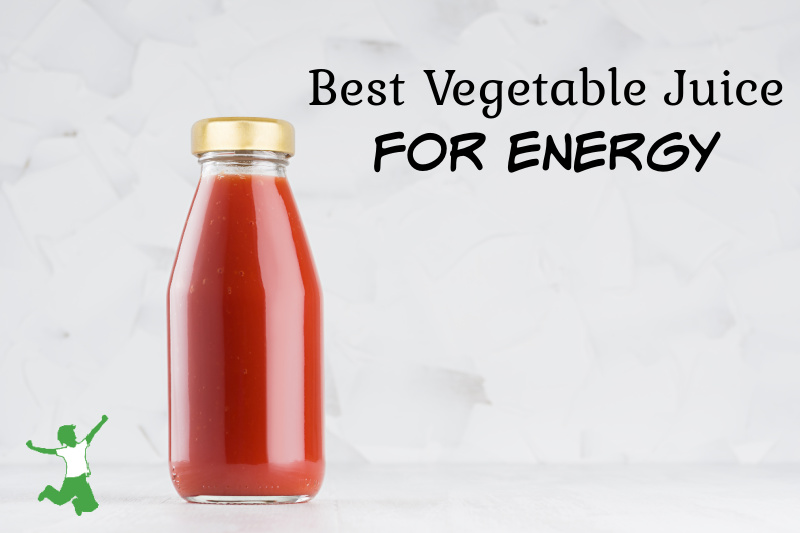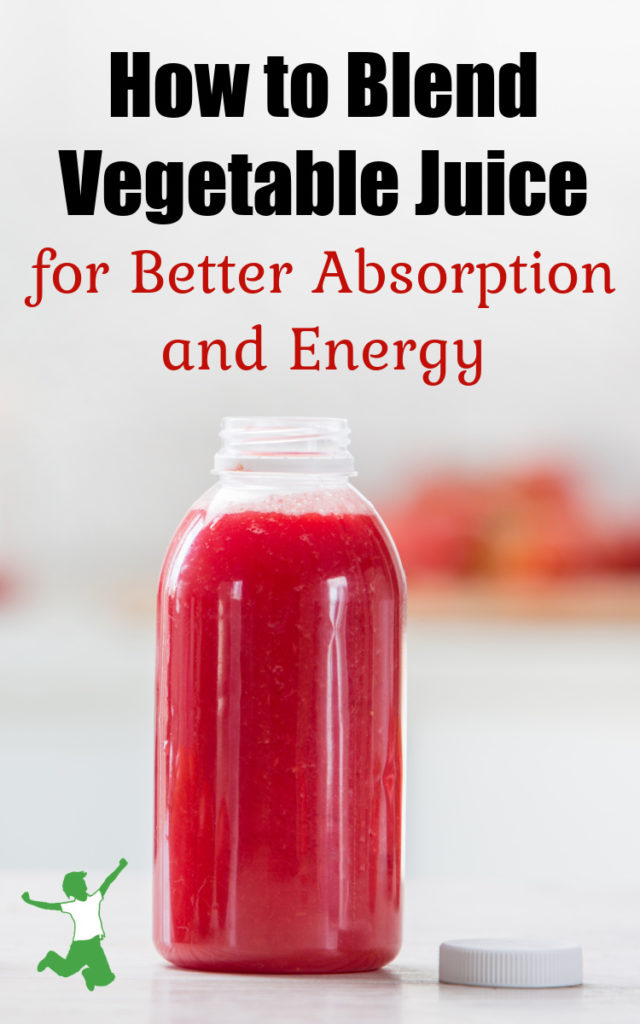Table of Contents[Hide][Show]
The four best vegetables to press into fresh juice and how to prepare it for optimal absorption, reduced fatigue, and improved energy all day long.

Is freshly pressed vegetable juice helpful for reducing fatigue and overall improved energy levels?
As someone who has juiced off and on as my health required for over thirty years, I would say that the answer to that question is yes.
Dr. Natasha Campbell-McBride MD, author of the best-seller Gut and Psychology Syndrome, calls fresh vegetable juice the best way to naturally restore the detoxification system. (1)
What happens when you optimally detoxify? More energy for the things you love to do!
Note that ONLY fresh-pressed vegetable juice is part of this definition.
Ideally, you should drink this juice at room temperature within 20 minutes. In other words, do not make large batches and refrigerate some for later.
Thus, cold-pressed “raw” juices processed with pressure instead of heat, vegetable smoothies, or green superfood powders are not in the same league nutritionally.
These are the guidelines given to me many years ago by an alternative Ayurvedic MD who literally transformed my health from sketchy to amazing in my early 30s.
How to Blend Fresh Juice for Best Results
There are a couple of caveats to keep in mind before you fire up that juicer.
First, just any combination of veggie juice is not going to do the trick.
You need to select vegetables that are safe to eat raw as the ingredients in your juice.
Secondly, veggie juice is surprisingly high in sugar even if you add no fruit. Most people have no idea about this.
Thus, since it is optimal to consume this type of fresh food on an empty stomach, you really should add some healthy fats to mitigate the sub-optimal effects of the sugar on your blood glucose.
In addition, the added fat improves the absorption of nutrients from the juiced vegetables. (2)
I prefer to use heavy cream as it blends very well with vegetable juice. You may substitute virgin coconut oil if you prefer. My least favorite choice is MCT oil for reasons discussed in the linked article.
I do not recommend extra virgin olive oil or unrefined avocado oil. While these fats are nourishing and will improve nutrient absorption, they do not contain medium-chain triglycerides that improve energy levels.
The vegetable juice recipe below is what I use when I feel I need an extra boost from the easily assimilated nutrients. The ingredients include a bit of healthy fat for improved absorption.

Energizing Vegetable Juice
Best vegetables to press into fresh juice for optimal absorption, reduced fatigue and improved energy.
Ingredients
- 1 large beet
- 2 sticks celery
- 2 medium carrots
- 1 medium cucumber
- 1 Tbl heavy cream
- .5 green apple optional
Instructions
-
Wash all veggies in mild soap and rinse well in filtered water.
-
Peel the beet and carrots if desired (not necessary if organic).
-
Juice veggies and drink immediately (within 20 minutes).

(1) GAPS Diet detoxification
(2) Bioavailability is higher from salads ingested with full-fat than with fat-reduced salad dressings








Is beet juice high in oxalic acid? I’m just wondering if a whole beet might be too much for me? I’ve had issues eating too much kale because of the oxalic acid
I do not have a juicer but am considering buying one. Do you have a brand you recommend? Thank you.
This article recommends good brands and what to look for in a juicer in general. https://www.thehealthyhomeeconomist.com/juicing-101/
28 grams of carb is a lot and the sugar amount is right up there, too. I agree the fat will help, but that seems like a bit taxing on the system. So then is this just an occasional drink? How much do you drink? Would 4 oz be enough to get energized?
When I read, “freshly pressed juice,” I thought what is a juice presser? After reading the comments I see that you’re using a juicer. (duh!) Now to find a good juicer that doesn’t break the bank.
Once per day for as many days as needed is how I’ve used it over the years. Cut it down if you’d like to drink less. But, only make and drink fresh. Never store any for later in the fridge.
Back when I first used it on doctor’s advice (30 years ago), I drank it once per day for several months. Once my health crisis had passed (and never returned thankfully), I have only used as needed since then.
Hi Sarah, we grow large amounts of food in the fall and I always juice lots of beets and carrots, freeze in cubes and use all summer for veggie drinks. I know it’s not as good as fresh but it’s nice using our own food. Do you have any idea if we’re losing a lot of the benefits with the juice being frozen?
You lose a bit. I’ve seen some estimates at 3-10%. If you do thaw, be sure to consume at room temperature. Cold juice is not a good idea.
I know it says only fresh pressed juice, but I don’t have a juicer. I do however, have a Vitamix blender. So making a smoothie out of this would work for me, but does it mean it would not benefit me at all?
It would be of benefit, but all that fiber would be counterproductive to quick absorption and an energy boost.
I don’t have a juicer can you use a vitamix?
You can do this with a vitamix, but all that fiber from the vegetables would hinder quick absorption for the desired energy boost. It reason to use a juicer is to remove the fiber, which for many people, makes them tired because it is harder to digest. Just the juice takes little to no effort for the body to absorb quickly.
I’m looking forward to trying this, but I have one question. How many ounces does this recipe make? The nutritional information says 1 g is a serving size but I assume that’s a mistake. Thanks in advance!
It varies based on the size of the veggies and their overall juiciness. Typically it makes roughly 12 ounces.